
Yendoa hakodatensis
Hakodate Sea-Tangle
30 August 2023
Little River Estuary, Strait of Georgia, B.C., Canada
Tide: 1.8 feet at 11:44am PDT (measured at Little River Tidal Station)
Weather: Partly cloudy (50%), wind NE 0 to 5 km/hour, sea smooth, humidity 53%, 20˚C.
Moon: Waxing Gibbous and just about to the Full Moon (99.5%); Full moon today at 6:35 pm PDT (14 days); Next Phase Third Quarter, 6 Sept 2023 at 3:21 pm PDT.
Additional Moon Notes: The moon today was a blue moon (the second full moon for the calendar month of August 2023) and it was also the nearest super moon of 2023. A super moon is when the moon is at or near its closest point to earth in its oval-shaped orbit; this positioning can also cause higher tides (and their opposite lows) than usual; the moon’s proximity to earth means it also looks notably larger and brighter. A blue moon and a super moon occurring on the same night is not common and typically this happens roughly once every 10 years; the next one will not occur for another 14 years and will be seen in early 2037.
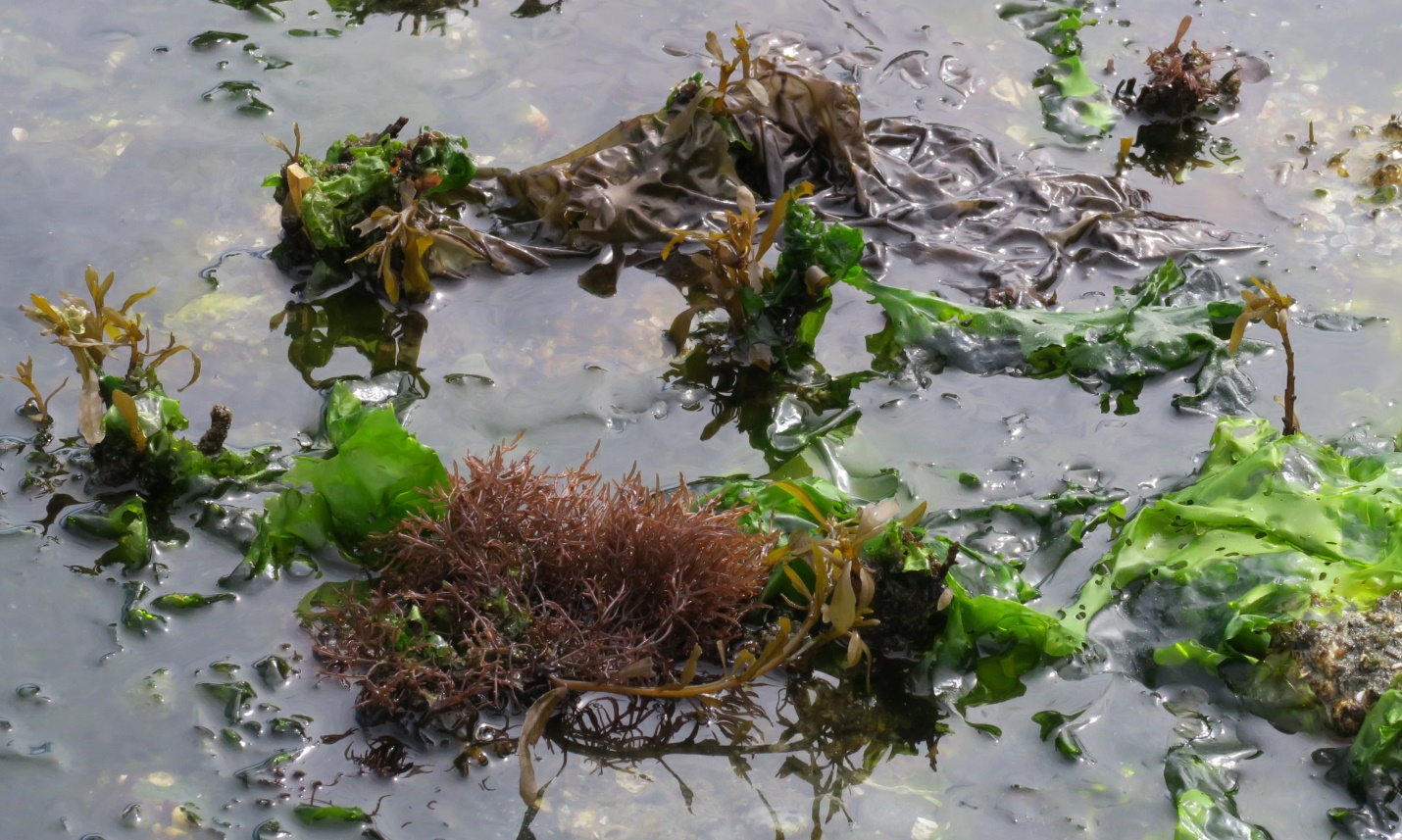
Figure 1: Yendoa hakodatensis is shown here (central pinkish mass of small forking thalli) growing in the low intertidal alongside Ulva lactuca (bright green sheets of algae) and Sargassum muticum (broken basal stems that are showing olive green/brown foliose ‘leaves’). The tide is about to re-submerge these macro algae, but before it does we can view here a clear presentation of the three main algal groupings – red, brown and green. Little River Estuary, Strait of Georgia, B.C., Canada. August 30, 2023. Photo ID 27604 ©Seaweedwhisperings.com
Person 1:
Seems to grow in rough-shaped balls, 7 – 10 centimeters in diameter.
Looks rather disorganized from the distance, but close up you can see an intricate array of small forks.
Attached to a fragment of Sargassum muticum amongst other seaweeds (mainly Ulva lactuca) on a cobble beach.
A small, just starting specimen is attached to a pebble. Its hairdo has not yet formed into its adult ball shape. Rather it has a Dr. Seuss “headdress” appearance.
At maturity Yendoa hakodatensis wants to be overlooked, thus the rather non-descript appearance. It can then continue on its inward exploration / development without much outside interference.
The peaceful weather conditions today are great for inward thinking and reflection. For the most part, I can tune out or deflect the considerable noise from a practicing Canadian Forces aircraft that has been circling overhead.
Overall feel to the seaweed is tough and wiry, in contrast with the smooth appearance of the individual branches.
Color and shininess of Yendoa hakodatensis is very reminiscent of soba noodles.
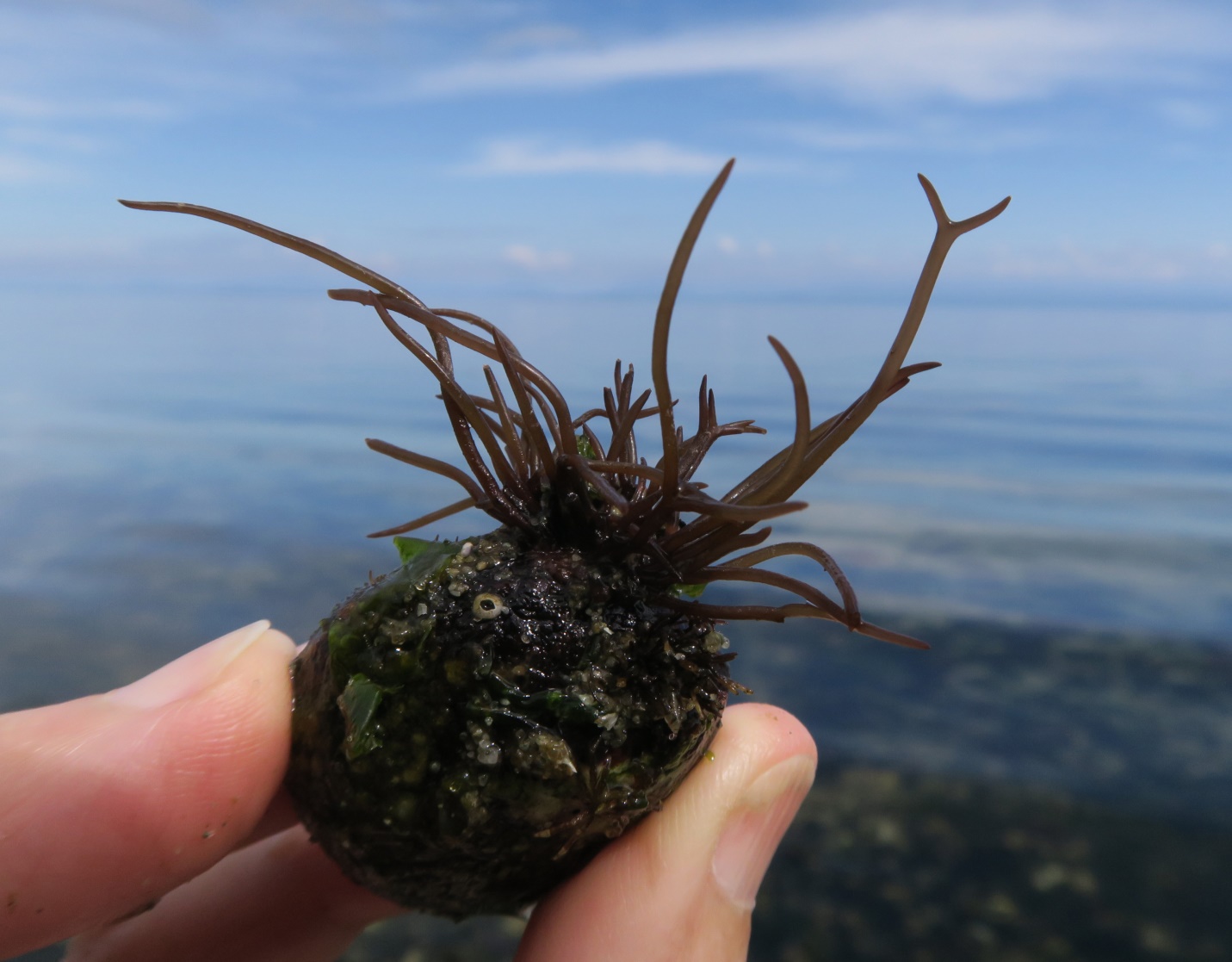
Figure 2: This is one of the very young individuals we found growing from a small cobble that is also home for some barnacles and other algae; branching has only just begun on the some of the thalli. Person 1 likened the appearance of these young Yendoas to a Dr. Seuss “headdress” look. Little River Estuary, Strait of Georgia, B.C., Canada. August 30, 2023. Photo ID 27605 ©Seaweedwhisperings.com
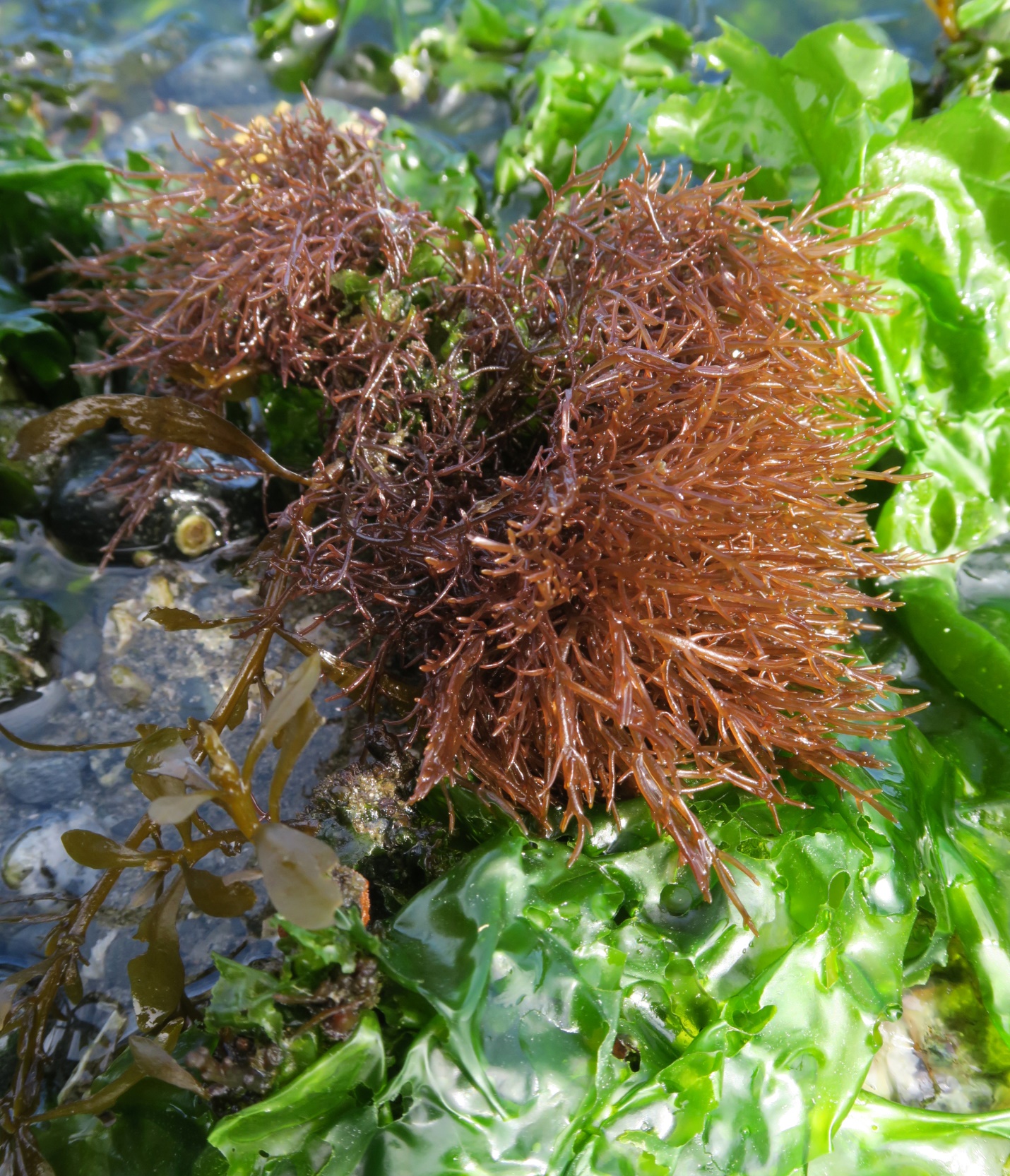
Figure 3: These two clusters (left one smaller, right one much larger) of Yendoa hakodatensis were found growing epiphytically from near the base of the main thallus of a Sargassum muticum alga. The tide has receded and having lost the buoyant support of the water, the “balls” of Yendoa are ‘listing’ a bit from their upright position. On this healthy and affixed individual you can see the older basal portions of the thalli are a darker wine red and the newer tips a more pinkish caramel brown red. Little River Estuary, Strait of Georgia, B.C., Canada. August 30, 2023. Photo ID 27606 ©Seaweedwhisperings.com
Person 2:
Pinkish coloration when backlit – plainer brown with no backlight.
Finely branched.
Like a bundle of briars forming a well-protected cluster or ball.
The branching pattern at first glance doesn’t seem so special, but looked at more closely it is quite distinctive.
The little side branches, and perhaps the fleshiness of the thalli along with some other indefinable traits, combine to have me think of crucifixes, even though the branching doesn’t form perfect crosses – interesting.
I thought of not writing the comment about the crucifixes, but once “seen” I could not “un-see” this impression; this possibly will be a way in to further understanding of the energy of this seaweed.
This is the first specimen of Y. hakodatensis that we’ve found in-situ in its habitat. It is anchored via its holdfast and growing epiphytically on another “invasive” species – Sargassum muticum.
Both are “invasive”.
Both can survive as newcomers / refugees and do well.
Yendoa doesn’t spread out like Sargassum, though; no, not at all. It grows in a tight and rounded cluster shape. This is the growth form it knows to do best.
Last fall when I first encountered and positively identified this seaweed, I found that it had no common name in the literature referenced. I decided to name it “Hakodate Sea-tangle”. That name arose from the balled up growth form and the numerous and multi-branched thalli. It looked as if you would only get into a “tangle” if you tried to follow one thallus to its base / source / holdfast origins, and also it seemed that the confusion and deterrence that this “tangle” presents was significant to this little seaweed’s energy.
In most lights Yendoa hakodatensis looks brown and ordinary. With light shining through, it is pinkish, tender looking, and truly lovelier – it has a whole other character in such conditions.
Do others see it mainly one way – and rarely the other?
Or, if seen in one light, are others then blinded to the ability to recognize it in any other light?
Are they often judged?
For their newness / foreignness?
For their ordinary look (without back light to give lovely color)?
Are they seen as prickly like a briar rather than more tender and vulnerable; or the converse, seen as very vulnerable and not tough enough for this life?
When I touch it, it’s a feeling like soft wire, my fingers slide gently over. There are no barbs; there is nothing harmful to my touch.
So, it feels much more pleasant than it looks, too.
Many Sargassum algae are torn away from their bases here (in fact, nearly all of them are!) – they have been forced to find another new home. [Note: recent incessant and strong NW winds pummeled the area for days and nights on end, so the floating masses of this seaweed will have been pushed across the Strait of Georgia to the opposite coastline along mainland British Columbia.]
Has this happened to Yendoa also?
Were many of them displaced by violent conditions, too?
These little balls of algae look like a bundle of briars, but they have no actual spines to hurt another.
Do you, Yendoa, have such a great need to keep others away?
Why?
What are all these ‘crosses’ you bear?
Are you hiding perceived sins, wrongs, or weaknesses?
When and how do you redeem them?
Or are you mainly very good at living with them; perhaps you take them on from or for others, too? So gaining balance or flow or redemption is then an endless task?
Another ‘connection’ came about the impression I was receiving with this seaweed; there was the initial impression of crucifixes and combining that with the ‘briar-like’ look led to a new concept, that being the “crown of thorns”; yes, the energy of this little seaweed also has that feel.
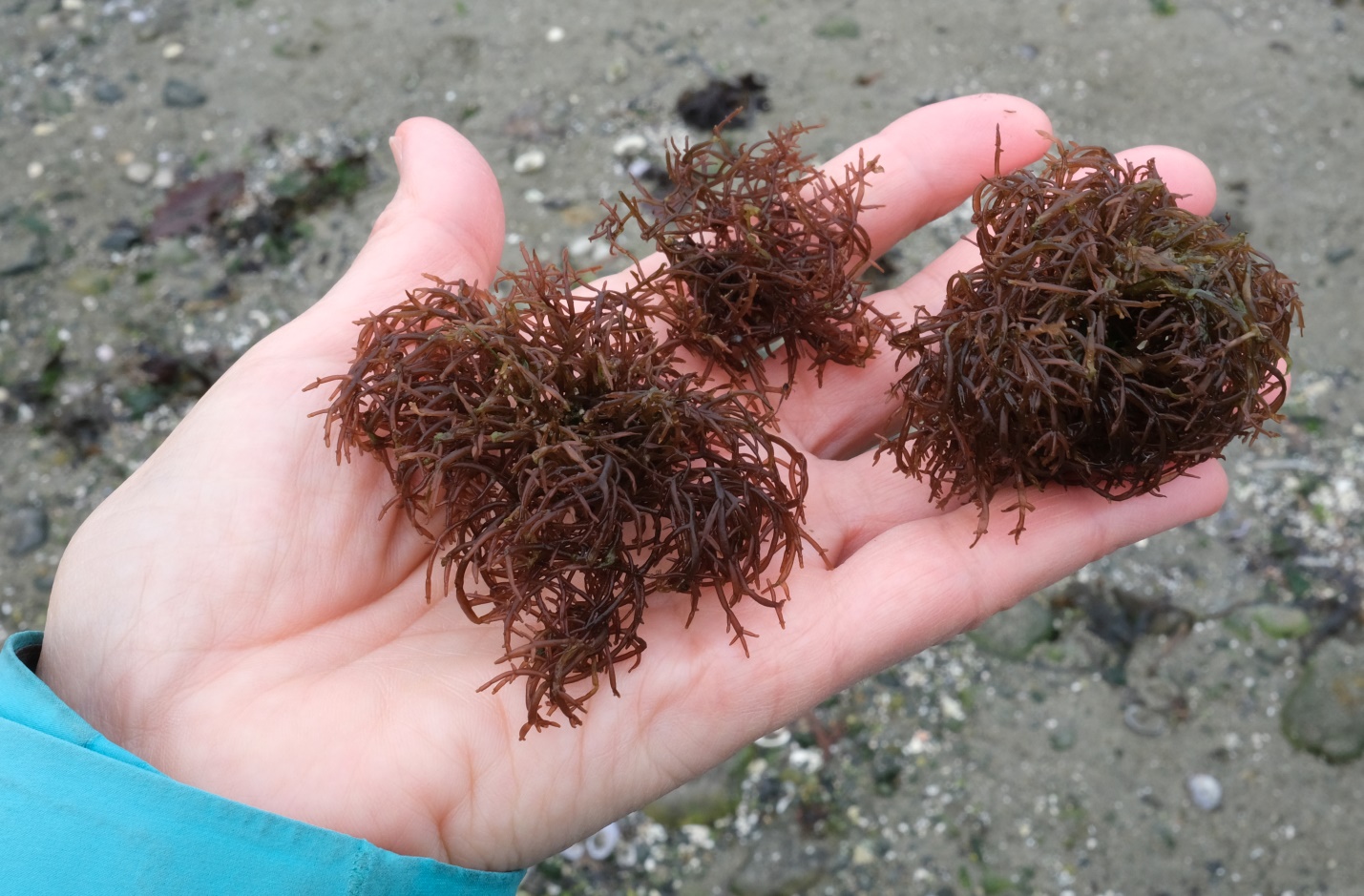
Figure 4: A collection of algal “tumbleweeds” are shown in hand here at a later season. These were found at Little River estuary in November of 2022. This is the same location of our late August 2023 Whispering, where we found many specimens detached and a few still affixed to their anchor points on the low intertidal cobbles and other alga. Little River Estuary, Strait of Georgia, B.C., Canada. November 21, 2022. Photo ID 27607 ©Seaweedwhisperings.com
Person 3:
First thought upon looking at this seaweed was, “oh, this is so beautiful.”
Initial impressions reminded me of Ahnfeltiopsis linearis and its “perky” appearance. However, as my interactions proceeded I found there is a different energy to this seaweed.
There is much less of what I’d call the “perky-let’s-see-what-is-around-the-next-corner” trait, and much more of a “let’s present an image to the world which is rather different from what is going on within / inside.” Yendoa does this, it seems, in order to have time to work out how they might interact and behave with others.
It is a type of ‘disguise’ that Yendoa hakodatensis employs and that is to present an image to the world which can be interpreted in very different ways, depending upon the attitude of the person doing the interaction.
Again, at first encounter it looks beautiful and that it is stepping out into the world with a desire to experience and to help. But spending a bit more time with this seaweed revealed that it can have the need to present an ‘image’ which gives pause to those who might interact. This same pause, hesitation, delay..., provides Yendoa time to decide whether indeed to step out and be seen, or whether more inner work needs to be carried out around its own uncertainty.
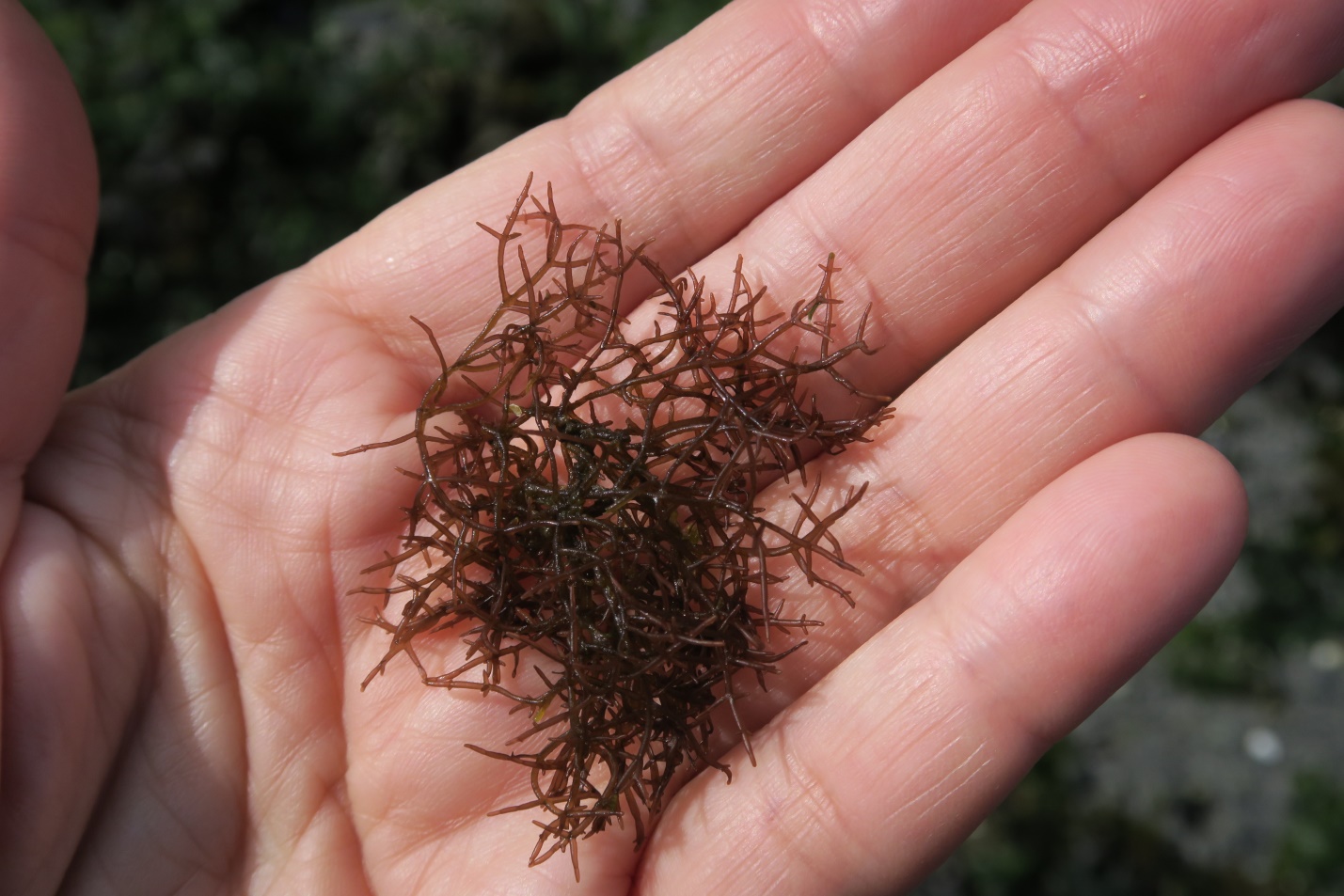
Figure 5: A smaller fragment of Yendoa hakodatensis is pictured here; even with a less sizable piece such as this it is easy to get “lost” in the “tangle” of branches and branchlets of this alga. Little River Estuary, Strait of Georgia, B.C., Canada. August 30, 2023. Photo ID 27608 ©Seaweedwhisperings.com
Discussion:
Why a cluster? The vision of a tumbleweed came as we pondered this question about the preferred growth form of Yendoa hakodatensis. Maybe the “cluster” is so that it’s able to be dislodged (from its holdfast) and still roll away while remaining relatively entire. Possibly this can help it find a new home, or at very least release gametes for its next generation in new areas.
The cluster means that inner branches / parts are given space but also protected. Needing adequate space and also consistent protection seems necessary for ideal survival.
The cluster / ball formation would also resist a lot of water movements when it is attached; there is enough ‘space’ between thalli that the “ball” as a whole wouldn’t create much drag in currents or wave action. So, this growth form may also be a way to remain anchored better.
The spacing between thalli in the protective cluster formation is generous enough to allow sunlight and nutrient rich sea water to reach all parts of the alga – and it is carefully proportioned to be no looser than necessary.
The color of this seaweed without light shining through is rather ordinary. However the translucent nature of the thalli makes it possible for the inner “red” to glow, especially when backlit by the sun. So it seems that there is only one perspective from which this inner glow can be witnessed; most of the time the rest of the world cannot perceive this warmth and color in their nature.
Being safely overlooked as dull and brown and unnoticeable, and then also wrapped up in protective ball, enables this seaweed to focus on their inward explorations. Some of these explorations seem rather weighty, indeed – as it seems that they do “bear many crosses”. Maybe their design is really suited to facing such challenges.
The “crown of thorns” from New Testament Christian iconography comes from events leading up to the Passion and crucifixion of Jesus. Accordingly the crown of thorns was meant to cause both pain and to mock Jesus’s claim of authority. This is, of course, one of the best known examples of “bearing the cross” for others in the Christian tradition. Other religions and indeed most spiritual practices have their own way of carrying the suffering of others. This little seaweed, we feel, possibly does not have such a far reaching or all-inclusive intent in their sufferings, but there is in them an acute awareness of the many harms and sufferings humans can both endure and perpetrate. It is a lot..., it can be very much a lot to bear, it would seem. Or does, Yendoa hakodatensis show one way, their way, and their solution to living well with this type of life challenge?
There are in this seaweed many noted contradictions.
We felt they would be easy to make quick judgments about.
It looks like a disorganized tangle, yet on close inspection has an intricate, distinctive and rather lovely branching pattern.
It also looks tough or barbed, but is actually quite flexible and smooth and even somewhat ‘tender’.
Most lights have it looking rather drab and plain in coloration; only backlight shows it with a more beautiful and attractive tint.
These are contradictory observations, but viewed altogether they seem to share the common purpose of providing protection from outside attention. It seems that Yendoa hakodatensis really does do best when it can find or even create its own “peaceful” circumstances. It creates for itself, as best it can, a solace amidst the busy and rude and noisy circumstances of life. The inner calm of reflection they can create is one that can shut out the sounds of fighter jets roaring overhead. And the purpose of that peace and solace and reflection – it seems it may be very much about reconciling and come to a deep understanding about the contradictions and extremes in life that they witness. Finding harmony with such realities is not easily attained, as what they take in so personally and also experience so viscerally, includes – the love and the hate, the light and the dark, the generosity and the greed, the contentment and the pain, the joys and the sorrows – of life.
Yendoa hakodatensis could be seen as an alga that does a lot of “constant turning inwards” and if what they contemplate there includes connection with their higher spiritual guidance things go well for them. If, however, when they turn inwards they find only a ‘tangle’ of their own stories and thoughts and ego, it is easy for them to feel hopelessly lost and their struggles are likely to persist and even intensify.
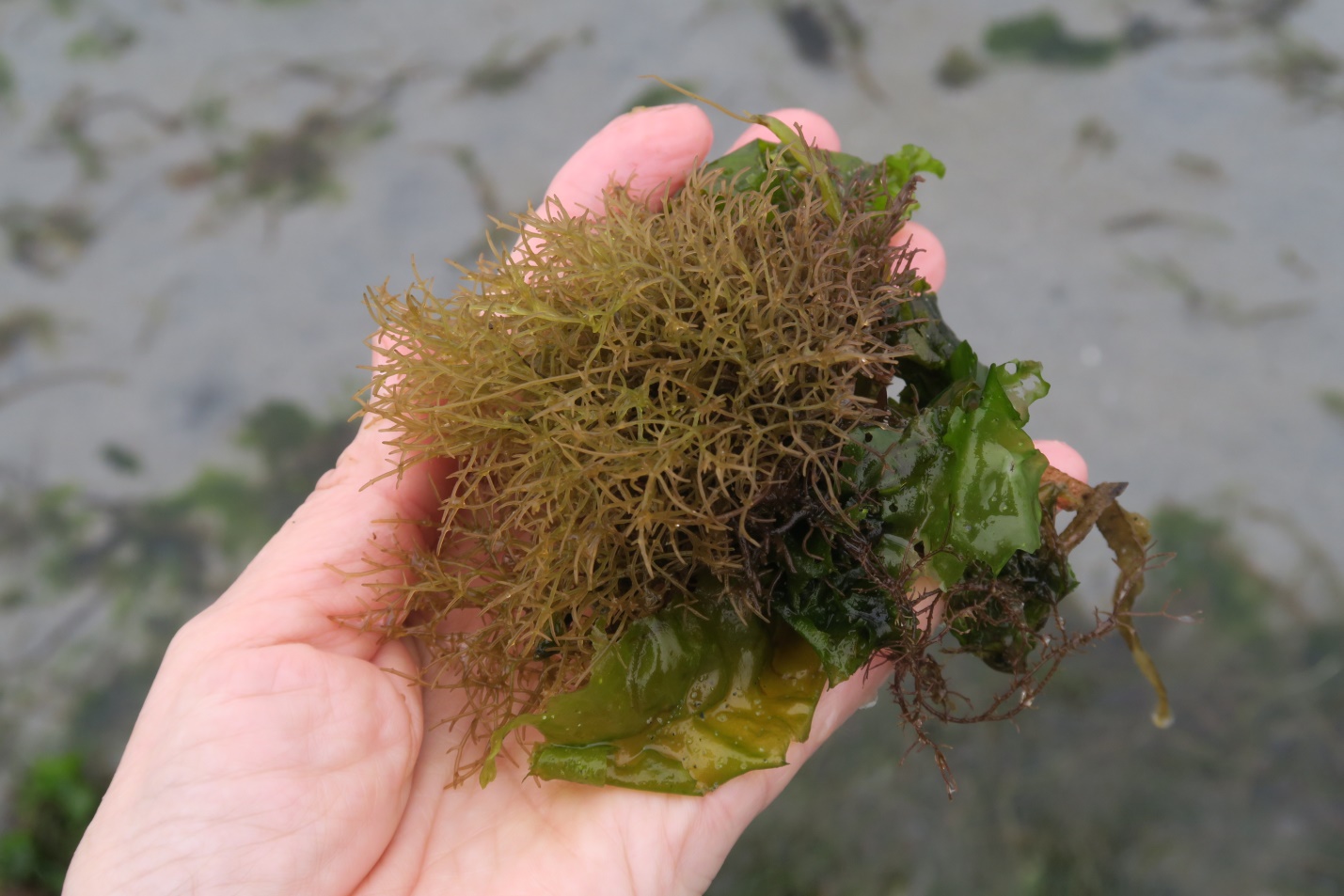
Figure 6: This individual Yendoa hakodatensis has been broken away from its home base for what appears to be some time now. It was found washed up with other macro algae bits and pieces on the extensive sand beach at Kye Bay. It has likely been ‘floating’ and therefore exposed to more light than would be the situation if it were anchored to its chosen substrate. Because of this it is unwell or dying and therefore losing its healthy photosynthetic abilities, which for a red alga means its functioning red pigments would mask the underlying green ones. A remnant of this healthy color is still visible in the greyish-red coloration at the underside of the “cluster” of branches; the most exposed branches are bleached to pale green. Kye Bay, Strait of Georgia, B.C., Canada. August 29, 2023. Photo ID 27609 ©Seaweedwhisperings.com
Biology & Natural History Information:
Description:
This dark red alga is loosely branched and grows up to 10 or 13 centimeters across. One source rather poetically and accurately described this species as growing in “purple globular masses of entangled gelatinous branches.” Structurally this species differs from Sea Belly, Neogastroclonium subarticulatum, (another red alga that shares similar outward traits) in that the hollow parts of its branches do not have transverse diaphragms internally. Pinch off a piece of this alga and just like Sea Belly, and a clear mucilage will be exuded. Reproductive traits of Yendoa hakodatensis include that spermatia are formed on the surfaces of the branches, but only specialized branchlets bear the cystocarps. The cystocarps can look like ‘pimples’ raised above the surfaces of the branchlet tips.
Habitat:
Low intertidal to shallow subtidal on rock or epiphytically on other macroalgae.
World Distribution:
This species has a wide native range from Pacific Russia to Vietnam (including Korea, China and Japan), and then also Australia and the Marshall Islands. In 1944 it was first noted near Ensenada, Mexico and it has become established at many locations on the western coast of North America from British Columbia to northern Washington and from southern California down to Costa Rica. It has also been introduced to the Netherlands, Brittany, Atlantic Spain and lagoons in France and Italy.
Remarks:
The type locality for this species is Oshoro, Hokkaido, Japan – hence the species name, “hakodatensis”.
This seaweed is considered to be invasive in many regions of the world. Transplants of pacific oysters are considered by some as the primary vector for the introduction of Y. hakodatensis, but hull fouling and ballast water have also been identified as vectors.
Classification:
Phylum: Rhodophyta
Class: Florideophyceae
Order: Rhodymeniales
Family: Lomentariaceae
Genus: Yendoa
Species: Yendoa hakodatensis (Yendo) C.C.Santos, Lyra & J.M.C.Nunes 2022
Former name(s): Lomentaria hakodatensis Yendo 1920; Lomentaria sinensis M.Howe 1924.
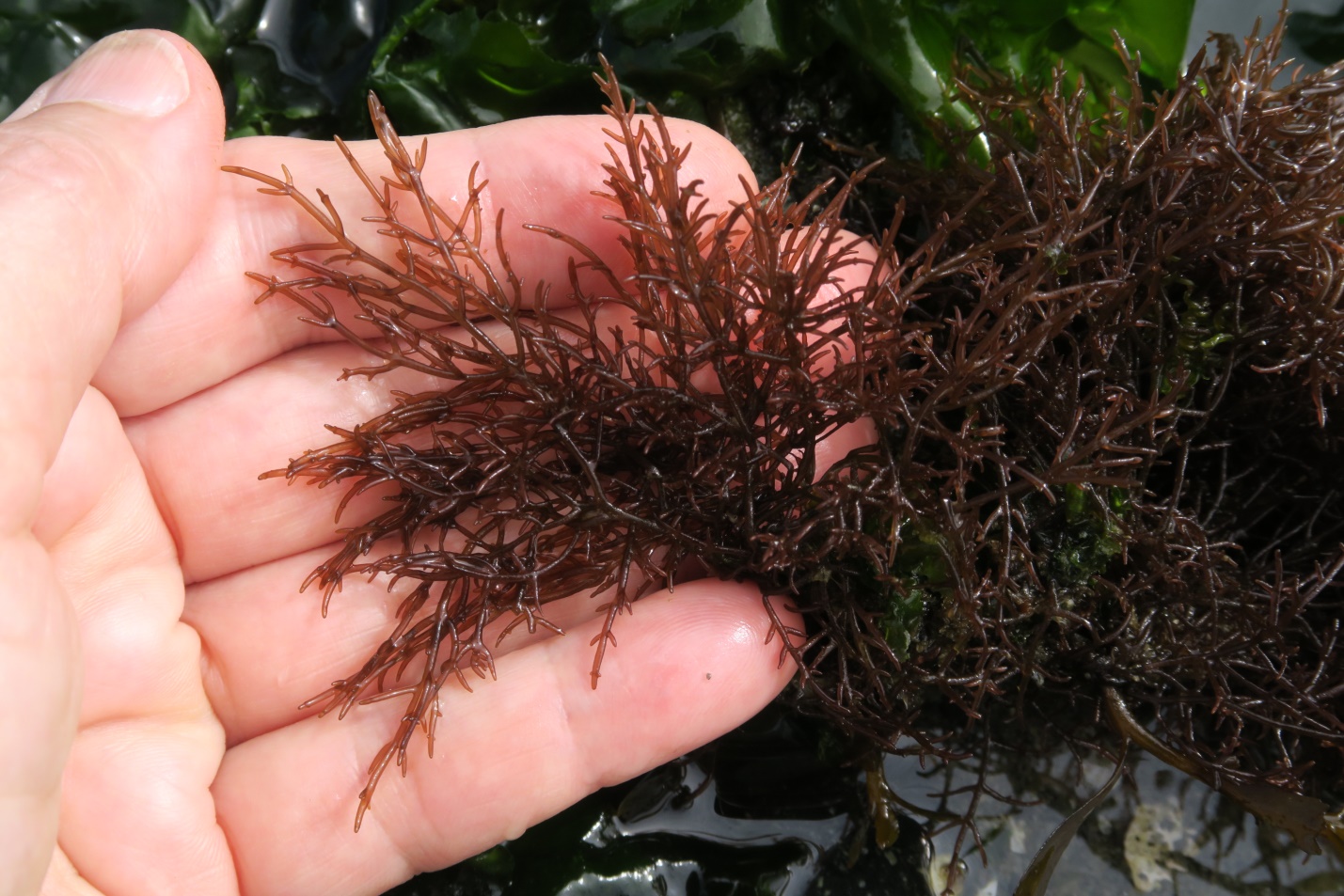
Figure 7: Separated, flattened and spread out from its preferred “ball” form, the thalli and branching pattern of Yendoa hakodatensis can be seen a bit more clearly here. Little River Estuary, Strait of Georgia, B.C., Canada. August 30, 2023. Photo ID 27610 ©Seaweedwhisperings.com
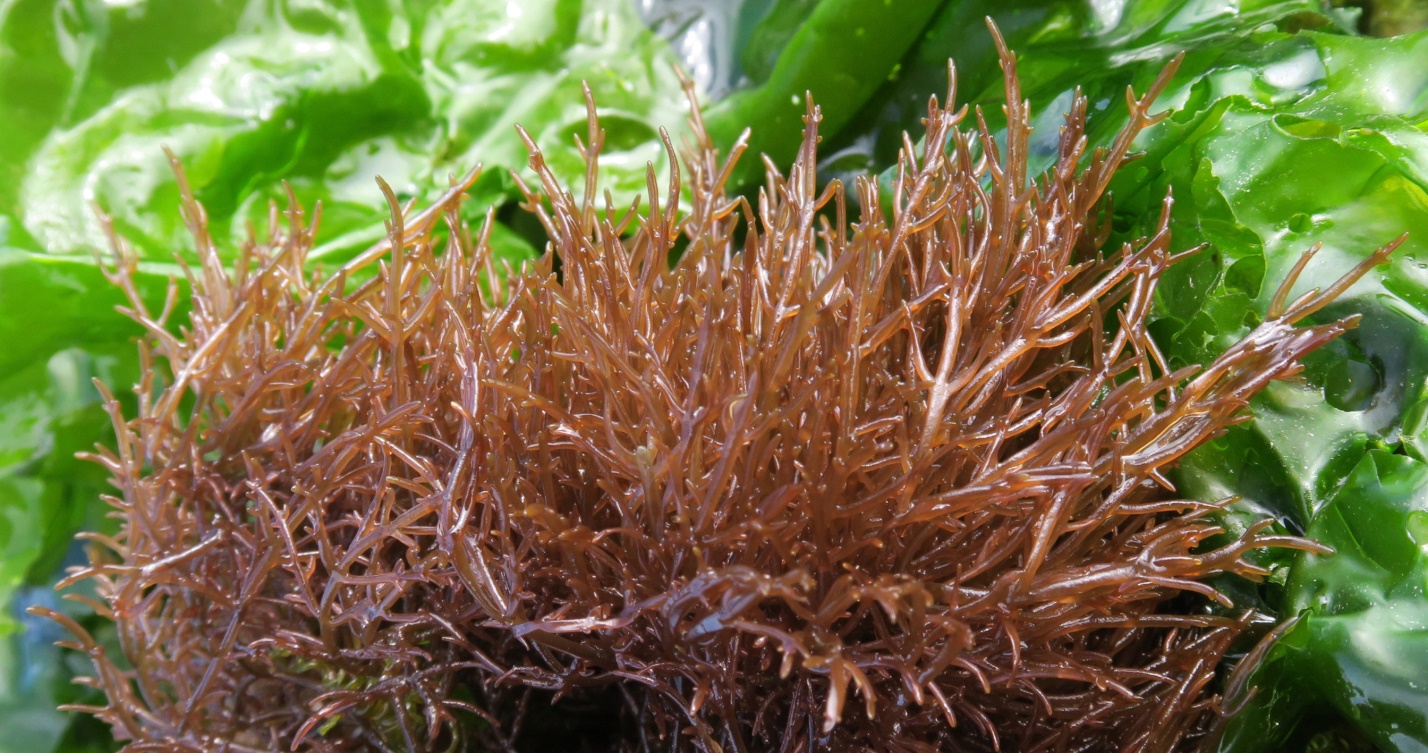
Figure 8: Viewed with different lighting, the ‘color’ and energy of this seaweed looks quite different. Little River Estuary, Strait of Georgia, B.C., Canada. August 30, 2023. Photo ID 27611 ©Seaweedwhisperings.com
![]()